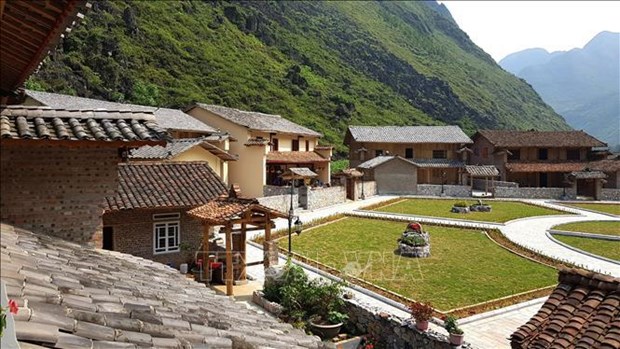Ha Giang effectively develops community-based tourism
With its advantages in terms of natural landscapes, rich cultural identities, customs and preserved traditional festivals, the northernmost province of Ha Giang has attracted attention from a large number of travel companies and tourists, and several potential community-based tourist sites have been formed.
 A community-based tourism and cultural village in Ha Giang's Meo Vac district. (Photo: VNA)
A community-based tourism and cultural village in Ha Giang's Meo Vac district. (Photo: VNA)Ha Giang province is home to 19 ethnic groups which have their own cultural traditions and identities.
The effective preservation and promotion of cultural values has helped the province in general and the ethnic groups in particular have a special attraction for travelers and those who want to learn about traditional ethnic culture.
According to Deputy Director of the provincial Department of Culture, Sports and Tourism Trieu Thi Tinh, over the past years, the province has selected outstanding cultural products to develop to create more highlights for tourism development. It has also paid attention to community cultural and tourism activities, and carried out projects on improving the quality of services and activities of community-based tourism and cultural villages.
Currently, the province has 40 identified community-based tourism and cultural villages, and 16 cultural villages recognised by the provincial People's Committee as meeting standards to serve tourists.
The provincial Department of Culture, Sports and Tourism assessed that these villages have operated well and attracted a large number of tourists, contributing to increasing locals’ income and promoting the value of tourism resources and cultural identities.
In addition to the achieved results, the community-based tourism in Ha Giang is facing many difficulties and challenges in terms of transport infrastructure and product quality that hinder it from developing sustainably and gaining high economic efficiency.
Therefore, in the coming time, the province will continue paying attention to improving the quality of services, training human resources for community-based tourism sites, and stepping up the communication work to raise locals’ awareness of maintaining and developing their cultural identities, said Tinh./.













